As coronavirus updates continue to unfold hourly, I know this crisis has likely placed an enormous amount of stress on your staff and daily operations. Even as much of the mainstream conversation about pets has focused on transmission and symptoms of the disease, we’ve been fielding a number of questions about best practices for practice management in these unprecedented circumstances.
To help, I thought I’d share what we’re seeing as some basic steps most practices are taking to conform to social distancing guidelines, protect their staff, and support pet owners. And given that most states consider veterinary practices to be essential businesses, adoption of and advancing these standards will become even more important as the new normal extends weeks and months into the future.
Curbside Check-In
We’ve all seen the images of drive through testing stations for COVID-19. Some vet practices are taking similar measures to ensure reduced crowding in waiting rooms, and to isolate owners and pets before entering a practice.
For most, it’s a simple text-based check-in with a following text once the vet is ready to see the patient. I know some practices have used a less-stringent method of this to help with unruly pets prior to the outbreak, but it is certainly gaining more adherents now. In fact I just brought my own dog in for a followup laboratory test at VCA Animal Emergency & Critical Care in Leesburg, VA and their curbside check-in worked great.
Two-Way Texting
Beyond curbside check-in, two-way texting from a mobile device is also taking on new urgency for practices. Within our industry, telemedicine largely means texting and sharing pictures over a mobile device (not desktop chat on your PMS or other older systems). Real-time video consults are still in the very early stages in veterinary medicine, and while it may accelerate because of this crisis, it is still far from standard.
Many practices are turning to talking and photo sharing over text to help ease pet owners concerns and address basic inquiries. Not only does it help with social distancing (for both staff and owners), but it could help head-off ER visits or panicked responses to non-critical health concerns.
Mobile Checkout and Payment
Similar to curbside check-in, a number of practices are deploying payment by phone to avoid touching or having patients visit a practice. For those practices that have mobile readers, contactless payments from a vehicle are also possible.
Medical Records Access
This crisis also clearly lights up the need for more practices to provide remote access to complete pet medical records, ideally through a mobile app. If practices are limiting hours or availability, there will be an increase in visits to the ER or other providers. It is absolutely critical that those veterinarians have access to complete medical records.
My own experience as an ER vet and the death of a patient because we didn’t have access to the animal’s medication allergies is the entire reason I started VitusVet. This is an easy fix and one practices should move to with alacrity.
Especially when people are feeling isolated and helpless, giving them ownership and portability of their pet’s medical records empowers them. It also sends the message that you value them as clients and want to provide them with transparency in uncertain times. As other practices can attest, that is a powerful differentiator that will lead to long-term practice loyalty.
Are you doing something beyond these basic measures? I’d love to hear about it, and can help share the information back with other practices. We’re all in this together and we take our role as enablers of superior pet care seriously.
Stay healthy and safe.
 by a veterinarian
by a veterinarian


